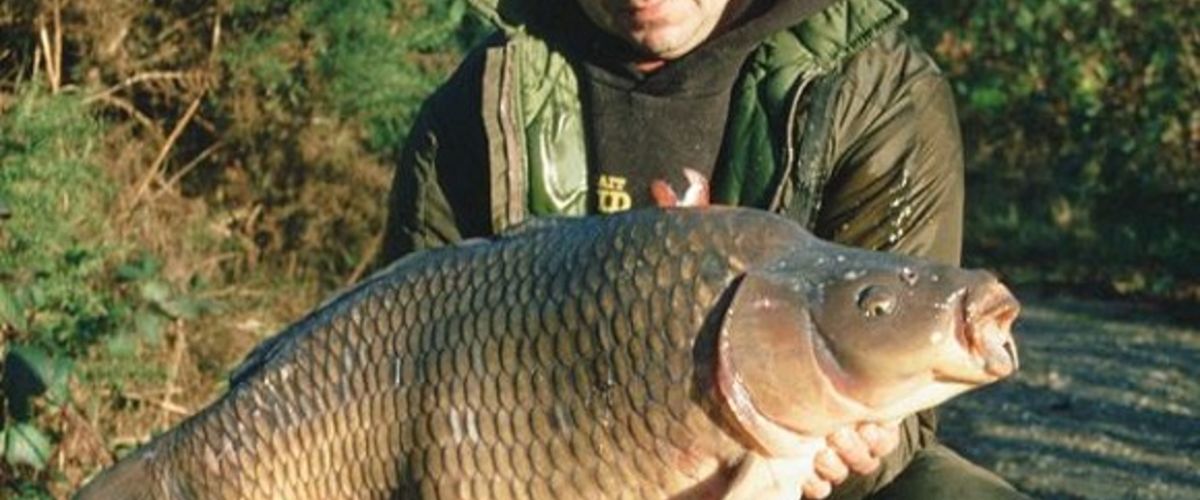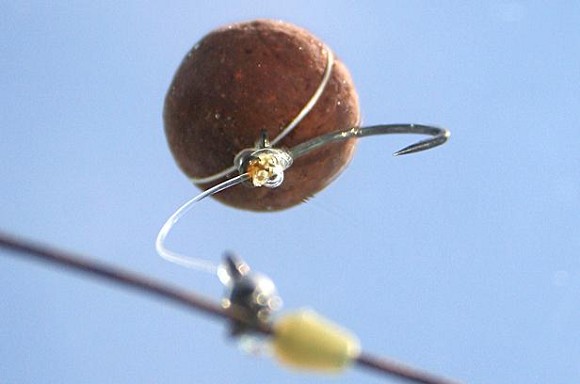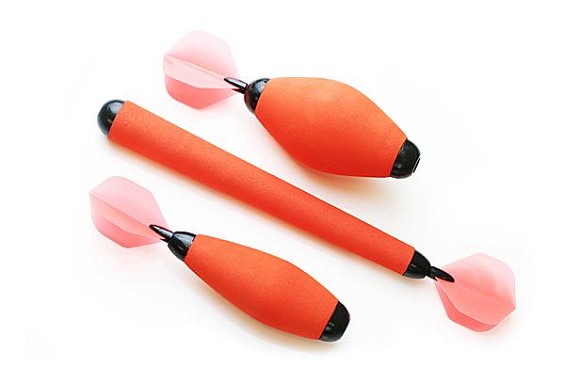
End Tackle According To… Kevin Nash
The carp legend, Kevin Nash reveals his thoughts on everything rig-related...
Kevin, what's your view on rigs right now: are we hitting the mark or are we a long way off?

To my mind, exceptionally successful carp fishing is determined by angling ability and edges, such as bait and rigs. The last rig innovation that had major impact was, I believe, the Chod Rig. Yes, we are hitting the mark as best we can but certainly, as we have nothing revolutionary to face the carp with, they are sussing us and getting away with it. I think to keep ahead of them, it's about focus and effort, continually working on your rig and adjusting elements to catch them out. It's this type of approach that makes the Siren RS1 such an aid, enabling you to understand when you're being done, so you can get on it, ring the changes and get the takes going again.

What's your thoughts on hooklink length? Shorter the better or do you favour a longer link; what's your thinking?
My thoughts are to present a hooklink length that enables a carp to take the hook and bait right into the mouth. Length of hooklink depends on the type of bottom that you are fishing over, the way the carp are feeding on that bottom and as I touched on above, tripping them up. To give you a brief example: working on the view that there is a trend toward very short rigs, six-inches, for this reason alone, I'll go 12- to 15-inches to catch them out. However, on a silty lake, the carp may be burying into the silt for the food, so a 12- to 15-inch hooklink lying on top will be ineffective whereas a 3- to 4-inch hooklink to get the bait into the silt will be the way I would go.
What about hooklink materials – braid, coated, stiff – what do you favour and which do you think the carp finds harder to deal with?
Mainly, I use three types of hooklink arrangement: Armourbraid (soon-to-be-re-launched as Armourlink) straight through for softish, subtle presentations. I love Armourbraid and so do many top anglers in the know. It's the reliable one for the big fish angler who can't afford to take any chances. It has immense abrasion resistance – you can tow barges on the stuff!
The second type of hooklink is combi rigs tied with Amnesia and Armourbraid, and thirdly, Triggalink and Armourbraid. Judging by my results, going to the trouble of tying a proper Amnesia/Armourbraid combi, as opposed to the lazy man's approach of stripping the coating off a plastic sheaved braid, puts me a lot more carp on the bank. I guess it's that 'being different from most' angle again. With the Amnesia combi, I get really deep hook holds indicating that they struggle to get rid of it. With the Triggalink combi, I catch out loads of riggy carp. This stuff is epic at the moment because so few people have realised its potential.
Do you think a fish regulates its suction depending on what it's picking up – i.e. it guesses from the size of the object or does it have the same suction all the time?
Absolutely! Two events can be happening here. The carp regulate their suck on cautionary grounds, or that is the way they are naturally feeding. I noticed this at Warmwell, where the silt was sandy and gritty. I don't think the carp really wanted to take mouthfuls of it down if they could avoid it. The way we hammered them on maggots proved this point. We could only catch them on a critically-balanced rig. Bottom rigs didn't work and neither did pop-ups, so I think they were regulating their suck just to waft the maggots up and not the silt.
Everyone's obsessed right now with lighting the hookbait. What's your thoughts on going the other way and making it heavier? Do you see any advantage to doing this?
Read above. If everyone's obsessed with one approach, then you know the carp have sussed them, so go a different way.
What are your views on Hair length? Should we revert back to the old school way of super long, super supple Hairs?
This is how I fish anyway. Longer Hairs achieve superior pricking. I've experimented a lot, pushing the Hair length limit until I had a potentially disastrous event. Fishing a rig with a three-inch Hair, I landed a carp in darkness – with no torch – and feeling down with my fingers, I had the sickening feeling that the carp had swallowed the rig and was gut-hooked. I cut the rig and sacked the fish so I could have a better look in the daylight, and when I got the carp out of the sack, I was amazed to discover that the carp was hooked in the belly. It had taken the rig in and blown it out of its gill cover. Was I relieved or what! A lucky escape. I wouldn't take the chance of going that long again.
Given the choice, what do you prefer to use a pop-up rig or a bottom bait rig? What hooks better in your opinion?
My preferred angling approach does not lend itself to pop-ups. I like to get carp feeding hard and in this situation, pop-up rigs are not so effective, but they come into their own when fish are moving around, picking up baits over an area, rather than pigging on a tight spot. Hook-hold-wise, with riggy carp it can take a lot of work and adjusting, to achieve optimum hooking – i.e. an inch or two back in the mouth, but when you do achieve that, it's a better position than most pop-up rigs hooking in the lip.
How can you see the development of end tackle products progressing?
Slowly and reinventing the wheel!
Kevin's biggest and best edge...
My best edge is sharpening my hooks with a diamond lap. This may surprise you if you use Nash hooks, which I believe that most unbiased top names would agree, are the sharpest. With production methods, there is a limit to how keen an edge you can achieve; an example is Samurai sword makers. The skills of a craftsman, learned over decades mean that he can achieve a keener edge than any machine. I have to mention here that unless you have the skills or the capability of an engineer to learn how to sharpen properly, then don't try it. The result will probably mean that your hook will be blunter than when you started. As the old 'uns among you know, I got a jeweller to sharpen my hooks in the 90's and I talked about this in my slide shows at the time. The amazing difference that a 'sticky' hook (as friends termed my hooks because they were so difficult to tie – they kept sticking in my hand) was plain to see with the pick-up rate.




